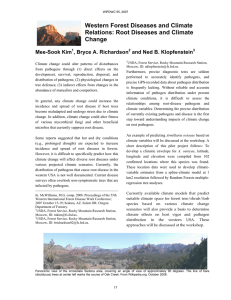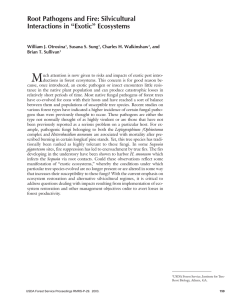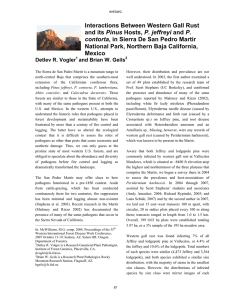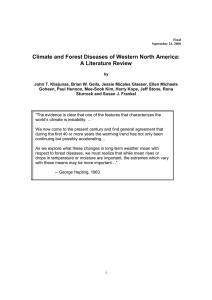USDA Forest Service Pacific Southwest Research Station
advertisement
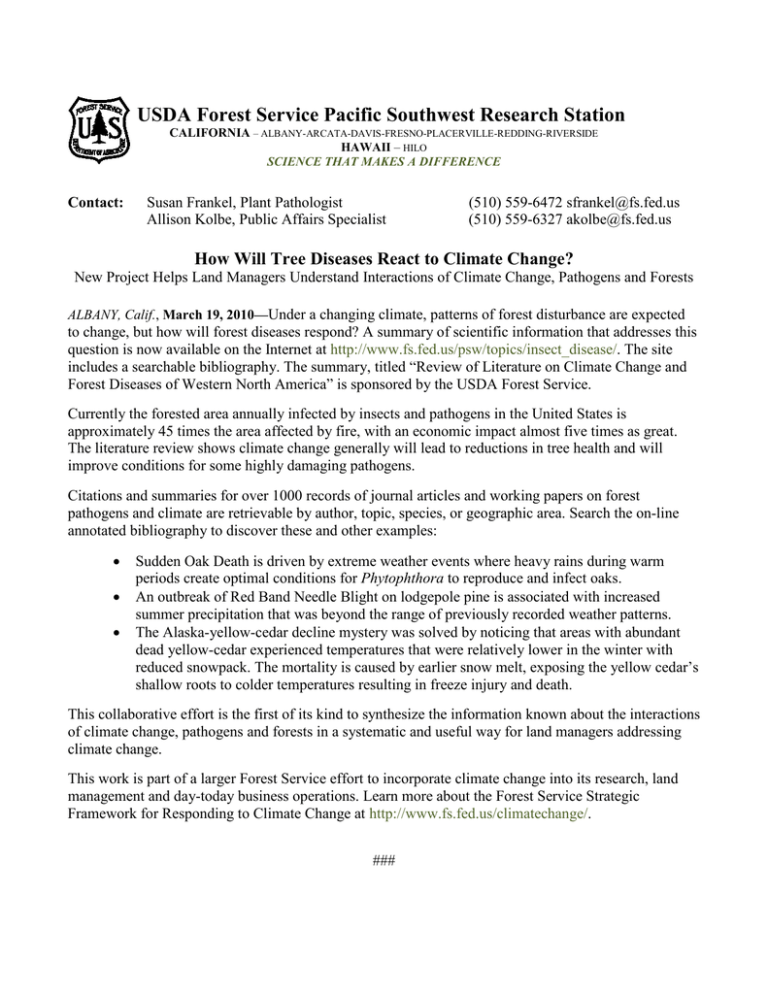
USDA Forest Service Pacific Southwest Research Station CALIFORNIA – ALBANY-ARCATA-DAVIS-FRESNO-PLACERVILLE-REDDING-RIVERSIDE HAWAII – HILO SCIENCE THAT MAKES A DIFFERENCE Contact: Susan Frankel, Plant Pathologist Allison Kolbe, Public Affairs Specialist (510) 559-6472 sfrankel@fs.fed.us (510) 559-6327 akolbe@fs.fed.us How Will Tree Diseases React to Climate Change? New Project Helps Land Managers Understand Interactions of Climate Change, Pathogens and Forests ALBANY, Calif., March 19, 2010—Under a changing climate, patterns of forest disturbance are expected to change, but how will forest diseases respond? A summary of scientific information that addresses this question is now available on the Internet at http://www.fs.fed.us/psw/topics/insect_disease/. The site includes a searchable bibliography. The summary, titled “Review of Literature on Climate Change and Forest Diseases of Western North America” is sponsored by the USDA Forest Service. Currently the forested area annually infected by insects and pathogens in the United States is approximately 45 times the area affected by fire, with an economic impact almost five times as great. The literature review shows climate change generally will lead to reductions in tree health and will improve conditions for some highly damaging pathogens. Citations and summaries for over 1000 records of journal articles and working papers on forest pathogens and climate are retrievable by author, topic, species, or geographic area. Search the on-line annotated bibliography to discover these and other examples: • • • Sudden Oak Death is driven by extreme weather events where heavy rains during warm periods create optimal conditions for Phytophthora to reproduce and infect oaks. An outbreak of Red Band Needle Blight on lodgepole pine is associated with increased summer precipitation that was beyond the range of previously recorded weather patterns. The Alaska-yellow-cedar decline mystery was solved by noticing that areas with abundant dead yellow-cedar experienced temperatures that were relatively lower in the winter with reduced snowpack. The mortality is caused by earlier snow melt, exposing the yellow cedar’s shallow roots to colder temperatures resulting in freeze injury and death. This collaborative effort is the first of its kind to synthesize the information known about the interactions of climate change, pathogens and forests in a systematic and useful way for land managers addressing climate change. This work is part of a larger Forest Service effort to incorporate climate change into its research, land management and day-today business operations. Learn more about the Forest Service Strategic Framework for Responding to Climate Change at http://www.fs.fed.us/climatechange/. ###

